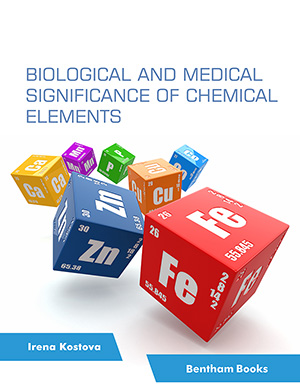Abstract
Background: There is still little research on the anti-aging effect of Pogostemon cablin Benth (PCB) on human skin. In this paper, the mechanism of the anti-aging effect of PCB on human skin was studied by using network pharmacology and molecular docking methods.
Objective: To analyze the pharmacological mechanism of PCB in the treatment of skin aging to provide a reference for new drug development and clinical application.
Methods: Active ingredients and related targets of PCB and skin aging-related disease targets are obtained through public databases, and the "drug-disease-target" and protein-protein interaction (PPI) network diagrams were constructed with the help of software to screen the core targets; then GO analysis and KEGG pathway analyses were performed on the target; finally, the molecular docking between the components and the targets were verified.
Results: 112 intersection targets of active compounds of skin aging and PCB were obtained after the screening. GO, and KEGG enrichment analysis found that these biological processes mainly focus on epithelial cell proliferation, aging, growth factors, longevity regulation pathway, cancer pathway, AGE-RAGE signal pathway, PI3K Akt signal pathway and IL-17 signal pathway. The molecular docking results showed quercetin, apigenin, irisnepalensis isoflavone, 3,23-dihydroxy- 12-oleorene-28-oleic acid, 5-hydroxy-7,4'- dimethoxyflavone and other major compounds were connected with TP53, JUN, HSP90AAL, AKT1 and MAPK1 through hydrogen bonds, and there was high binding energy between them.
Conclusion: Through multi-target prediction and molecular docking verification, it shows that PCB has a strong effect in the treatment of skin aging, which provides a reference for further research.
Keywords: Network pharmacology, pogostemon cablin benth, molecular docking, skin aging, PPI, GO.
[http://dx.doi.org/10.4155/fmc.14.6] [PMID: 24649956]
[http://dx.doi.org/10.1055/s-0035-1556120]
[PMID: 27028172]
[PMID: 30557490]
[http://dx.doi.org/10.1016/j.tifs.2016.10.012]
[http://dx.doi.org/10.3390/nu11092169] [PMID: 31509968]
[http://dx.doi.org/10.1016/j.ejbt.2017.03.007]
[http://dx.doi.org/10.1186/1758-2946-6-13] [PMID: 24735618]
[http://dx.doi.org/10.1016/j.jprot.2019.103613] [PMID: 31843688]
[http://dx.doi.org/10.1080/17425247.2020.1713087] [PMID: 31910342]
[http://dx.doi.org/10.1155/2020/5217405] [PMID: 33299870]
[http://dx.doi.org/10.1016/S1461-5347(00)00295-9] [PMID: 10996573]
[http://dx.doi.org/10.1002/(SICI)1098-1004(200001)15:1<57::AID-HUMU12>3.0.CO;2-G] [PMID: 10612823]
[http://dx.doi.org/10.1186/1471-2105-15-293] [PMID: 25176396]
[http://dx.doi.org/10.1093/nar/gkaa1074] [PMID: 33237311]
[http://dx.doi.org/10.1101/gr.1239303] [PMID: 14597658]
[http://dx.doi.org/10.1093/nar/28.1.235] [PMID: 10592235]
[http://dx.doi.org/10.1038/s41467-019-09234-6] [PMID: 30944313]
[http://dx.doi.org/10.1186/s12906-020-03043-x] [PMID: 32811507]
[http://dx.doi.org/10.1002/jcc.26054] [PMID: 31436329]
[http://dx.doi.org/10.1042/BSR20203565] [PMID: 33409535]
[http://dx.doi.org/10.1371/journal.pone.0083922] [PMID: 24391846]
[http://dx.doi.org/10.1155/2021/9965906] [PMID: 34746316]
[http://dx.doi.org/10.1080/13880209.2020.1817103] [PMID: 32956608]
[http://dx.doi.org/10.1016/j.clindermatol.2019.04.005] [PMID: 31345320]
[http://dx.doi.org/10.1016/j.ijfoodmicro.2004.03.022] [PMID: 15246235]
[http://dx.doi.org/10.1007/s00394-015-0884-3] [PMID: 25804201]
[http://dx.doi.org/10.1016/j.freeradbiomed.2008.11.005] [PMID: 19071213]
[http://dx.doi.org/10.1002/biof.1467] [PMID: 30496629]
[http://dx.doi.org/10.1016/j.biopha.2016.04.047] [PMID: 27470332]
[http://dx.doi.org/10.1002/jcp.26595] [PMID: 29663361]
[http://dx.doi.org/10.1158/0008-5472.CAN-08-4287] [PMID: 19491266]
[http://dx.doi.org/10.3892/ijmm.2018.3550] [PMID: 29532858]
[http://dx.doi.org/10.1186/s13059-020-01990-9] [PMID: 32264951]
[http://dx.doi.org/10.1016/j.mad.2008.04.002] [PMID: 18486187]
[http://dx.doi.org/10.2174/157340911795677602] [PMID: 21534921]
[http://dx.doi.org/10.1021/ci4004688] [PMID: 24261543]































